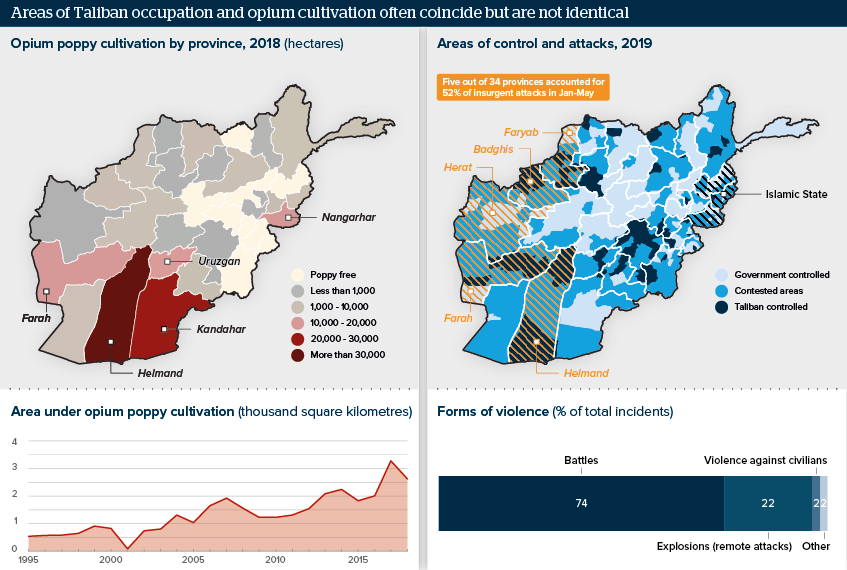Afghan conflict and drugs fuel one another
Revenues from the heroin business keep the Taliban solvent and reduce economic pressure for peace
Source: UN Office on Drugs and Crime; US Special Inspector General for Afghanistan Reconstruction; NATO Resolute Support mission; Al Jazeera, BBC and other media reports
Outlook
Afghanistan's opium trade has thrived in the ungoverned chaos and lawlessness of wars over the last 40 years. Drugs and conflict have become intertwined and each prevents a solution to the other. Costly international efforts to destroy poppy fields have reduced growing in some provinces without reducing overall cultivation, which has historically performed best in the south, the Taliban's heartland (although insurgent operations now extend northwards).
The Taliban raise substantial funds from drugs by taxing farmers and transportation rather than through direct management. The revenues sustain warfare and allow the Taliban to view peace as possible but not essential. They have been non-committal about curbing the trade in the event of a US-brokered deal.
Impacts
- As the international community loses hope of curbing production, Afghanistan remains the world's top manufacturer of heroin.
- Opium farming and processing account for 30-50% of GDP and in many areas the crop is a monoculture crowding out other agriculture.
- Drugs trafficking does not recognise boundaries and has a corrupting effect on governance in areas outside Taliban control.
- In eastern Afghanistan, the Islamic State group operates its own taxation system on legal and illegal activity.
